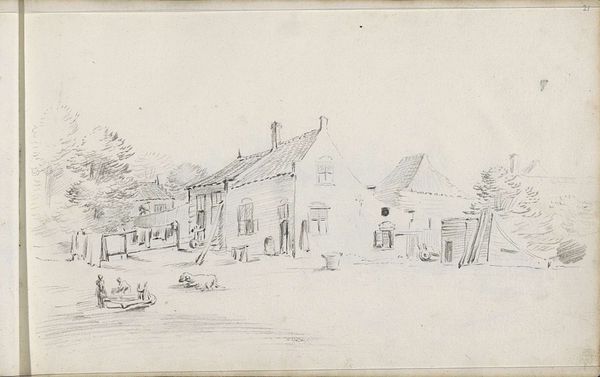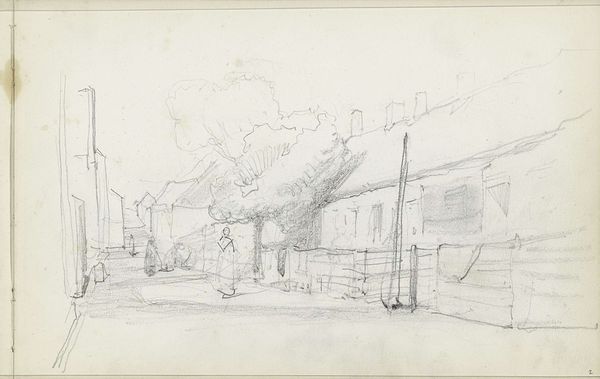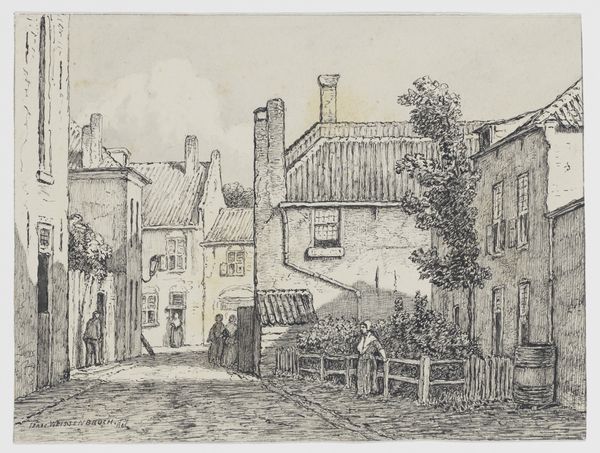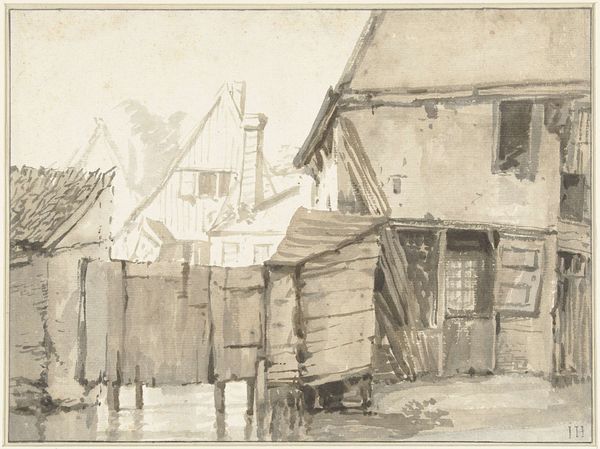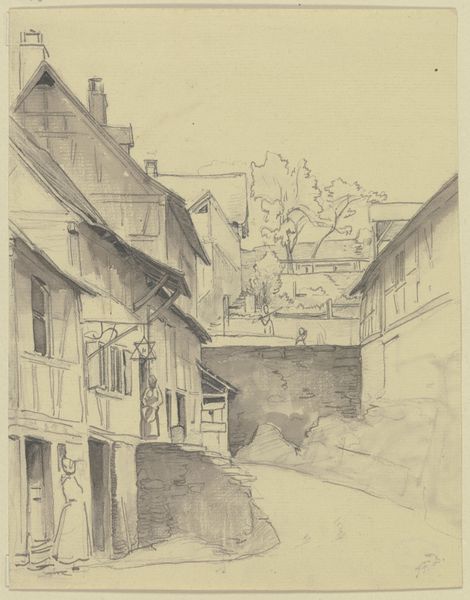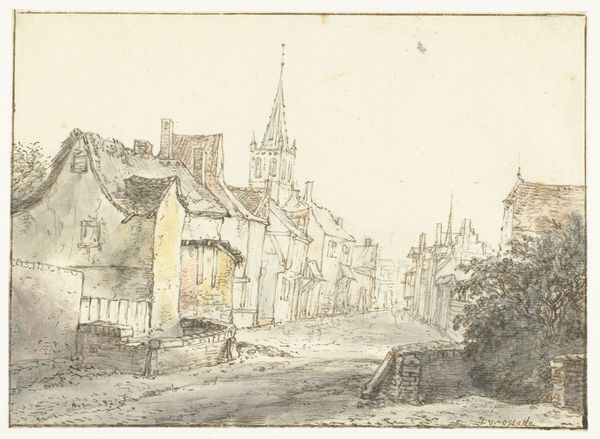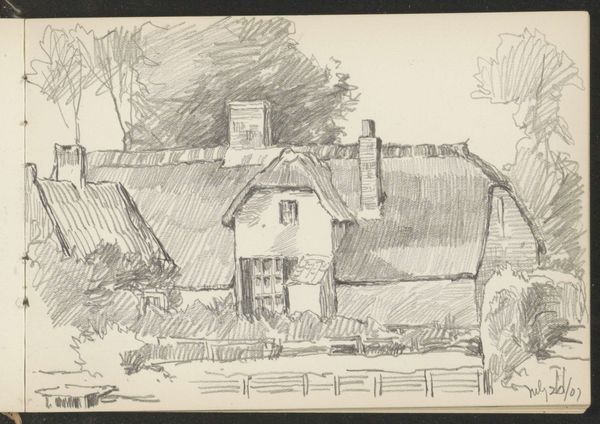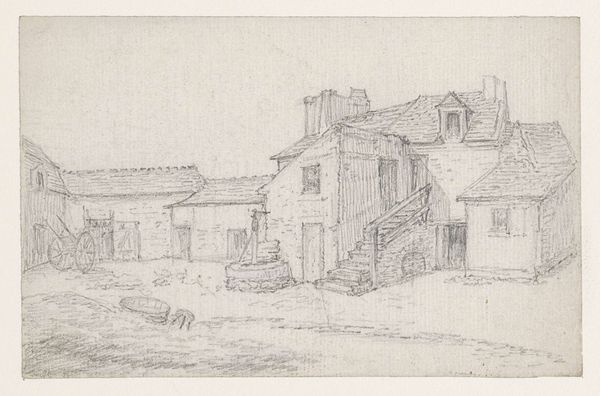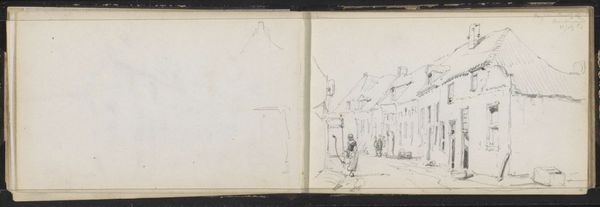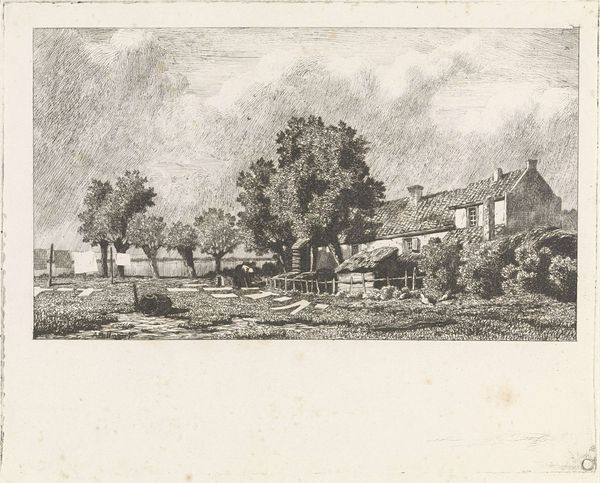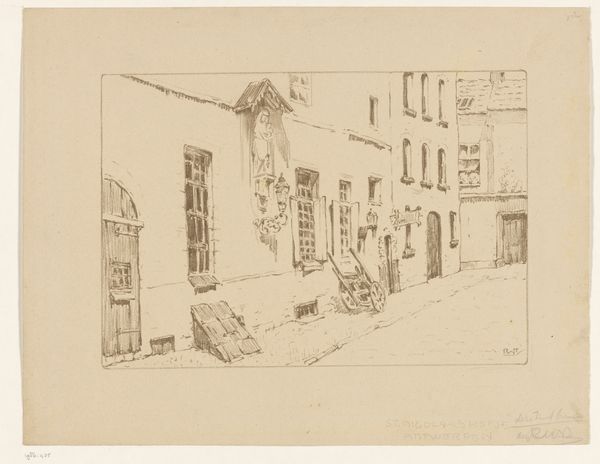
Pesthuisstraatje met het oude klooster te Harderwijk Possibly 1862 - 1867
0:00
0:00
drawing, pencil
#
drawing
#
dutch-golden-age
#
pencil sketch
#
landscape
#
etching
#
pencil
#
cityscape
Dimensions: height 410 mm, width 568 mm
Copyright: Rijks Museum: Open Domain
Curator: Welcome! We're standing before Cornelis Springer's pencil drawing, "Pesthuisstraatje met het oude klooster te Harderwijk," likely created between 1862 and 1867. It's a cityscape sketch housed here at the Rijksmuseum. Editor: It feels very… faded, almost ghostly. The greyscale tones and the soft pencil lines give it a dreamlike quality, like peering into the past. The stark buildings lining the narrow street are very present. Curator: Indeed. The material itself speaks to a particular method of recording the built environment. Pencil, a readily available and portable tool, allows for on-site documentation. This process reflects the nineteenth-century's growing interest in urban landscapes as sites of historical and social significance. The accessibility of this medium, too, is quite important; it democratizes the creation and consumption of art. Editor: Looking closer, the buildings themselves are fascinating. Note the variations in their architecture, with gabled roofs and the different door ways. There are figures too, seemingly absorbed by their day to day life, captured in this timeless frame. This invites us to ponder upon our current ideas of home and street life. Curator: Precisely! The symbolism in this setting is hard to ignore. Considering the name—'Pesthuisstraatje' which alludes to a plague house— there are elements that represent disease, marginalization and a call to reflect on places and individuals affected during plague times. Springer offers a sanitized picture though, one that suggests a sanitized narrative on dealing with catastrophic diseases and societal inequity, Editor: That is insightful. I am sure Springer also aimed at showing continuity and resilience. The composition leads the viewer down the street, deeper into the image, despite the sombre pallette and title. It invites curiosity, and perhaps some hope to reflect and create dialogue about its deeper meanings. Curator: A good way to sum up. This sketch acts as a reminder to look into those times and how different it all was back then! Editor: Yes, and I believe this drawing still speaks across generations with its beauty. It reminds us to preserve cultural memories embedded in ordinary things.
Comments
No comments
Be the first to comment and join the conversation on the ultimate creative platform.
